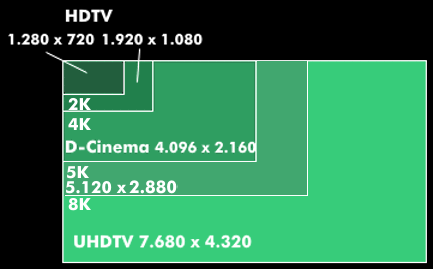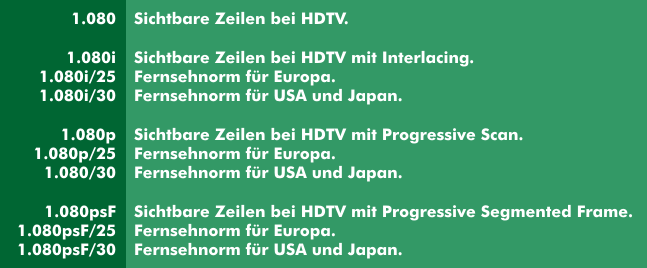high definition television (HDTV)
High Definition Television (HDTV) is an umbrella term for high definition digital TV, which uses more lines than NTSC or the PAL television standard. According to the original target, the resolution of HDTV was to be twice that of national television. That would be 1,250 lines in Europe and 1,050 lines for NTSC.
The development of HDTV
The activities for high-definition television were primarily driven in the USA, where the Federal Communications Commission( FCC) and the American Television Systems Committee( ATSC) accompanied the standardization. Under the U.S. standard, two image formats with different resolutions were standardized according to BT.709: 1,920 x 1, 080pixels and 1,280 x 720 pixels, which are the pixels displayed.
The variants of HDTV
In Europe, as part of a Eureka project, an alternative concept was developed with different image resolutions, of which the two image formats already mentioned were ultimately selected. The aspect ratio of HDTV is 16:9, and the frame rate is between 24 and 60 frames per second. The two HDTV formats are indicated with the number of lines and the frame rate, separated by a horizontal bar. The one with the lower resolution as 720/25 and the high-resolution one with 1,080/25. The scanning method is indicated with additional letters after the line number: "i" stands for interlaced, i.e. for the interlaced scanning method, "p" for progressive scan and psF for progressive segmented frame. The variant identification can then look as follows: 720p/30 or 1,080i/29.97. Thus, 1,080i means a display in interlaced scan with a resolution of 1,920 x 1,080 pixels, which corresponds to the so-called Full HD. If the same resolution is displayed in progressive scan, then it is referred to as 1,080p.
For video compression HDTV uses MPEG-2, but increasingly the more efficient video codecs such as H.264/ AVC and WindowsMediaVideo(WMV HD) are used, which are superior to MPEG-2 in compression and picture quality. These are provided for in the DVB-S2 standard.
In addition to HDTV, other formats for digital TV have been standardized by the Advanced Television Systems Committee (ATSC), such as Enhanced Definition Television( EDTV), Standard Definition Television ( SDTV), Low Definition Television( LDTV) and the extremely high-definition Ultra-HDTV( UHDTV). Two digital video formats, High Definition Video( HDV) and Advanced Video Codec High Definition( AVCHD), have been developed for the transmission and storage of data streams.


